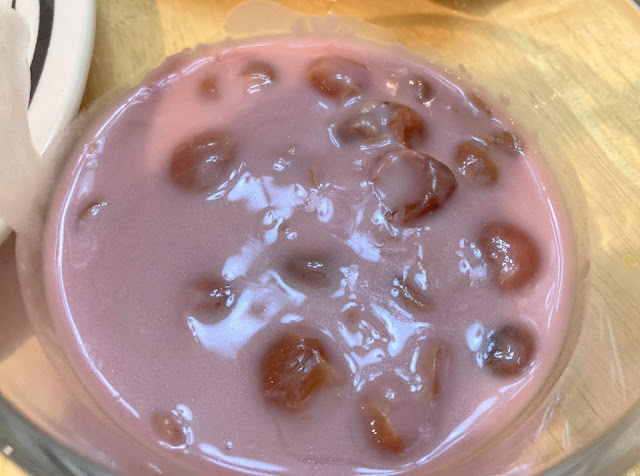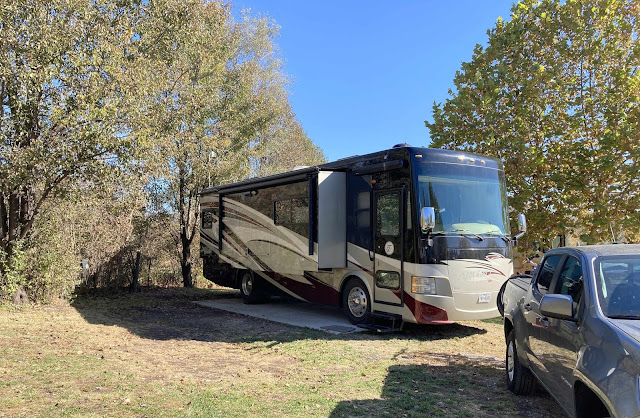When the excitement of buying a new vehicle is over, then the real work begins. Mark had a big job ahead of him, collecting all the pieces and parts needed to get our new Chevrolet Colorado pickup ready to tow behind the motor home. This job isn't for the faint of heart, and this blog will be tedious for anyone not interested in the details of motor homing. But we wished we had a resource like this when we started this process.
After doing much research from many different web sites, Mark started a spreadsheet with all the things he needed to have on hand to get the pickup ready for towing. The spreadsheet was pretty long, as he ordered the following items:
Roadmaster Base Plate (RM-523182-5)
Roadmaster Diode Wiring (RM-15267)
Roadmaster Charge Line (RM-156-25)
Roadmaster Battery Disconnect (RV-766)
Roadmaster Safety Cables (RM-643)
Demco Air Force One Brake Reinstallation Kit (6217)
Demco Air Force One Reed Switch (SM6272)
Roadmaster to Blue Ox Tow Bar Adapter (BX88185)
Roadmaster 3/4-inch Linch Pin (RM-910008-00) Be sure to order two--ask us how we know!
For the installation process, he also ordered: Red Lock Tight, heat shrink wire splice, and Di Electric Grease. Mark updated his spread sheet with where he found the best price to order each item, when he ordered it, and when and how it was supposed to be delivered. It was a major job just getting all the parts ordered and delivered before the real work had to begin.
Chevrolet says that you have to disconnect the battery before you tow our new pickup. So Mark installed an automatic battery disconnect button on the dashboard. Denisa was glad she wasn't there the day that he was drilling holes in the new dashboard. Then he mounted the the automatic disconnect box to the battery and found a place for it under the hood.
He also installed the diode wiring kit, that ties the pickup's brake and blinker lights to the motor home. That involved running a wire the length of the truck, and splicing into the new wiring. He also installed the charge line, that keeps the pickup's battery charged while it is being towed down the road. Again, Denisa was glad she wasn't there that day when he was cutting our new wiring and drilling a hole in the truck's fire wall to thread the wires. After a couple day's work, we had more things under the hood of our new pickup, as Mark had to find room for all these additions.

Before we traded in our old car, Mark had taken off the Air Force One braking system. That uses the air pressure from the motor home to apply the brakes in the vehicle being towed. Besides the tow bar, this was the main part we could re-use with this new vehicle. We still had to buy the re-installation kit, but it saved us around $800. It's getting more crowded under the hood of our new pickup with another box installed.
Denisa missed out on those three installation processes, as she was taking her mother to her doctors' appointments four hours away in Oklahoma City. But she was there the day that he installed the tow base plate onto the pickup. We started early that morning, as Mark started unscrewing the 45 bolts and screws necessary to disassemble the entire front of our new pickup. That includes the seven screws that hold the wheel well cover in place on each front tire.
While Mark is getting his body into contortions to loosen bolts that were never meant to come off, Denisa was taking pictures. He discovered that this is a tough job for an old guy with bifocals. It's hard to get those bolts in focus when you're working in such tight quarters. The front of our pickup is already looking quite different as parts begin to disappear.
Denisa's job was gathering up all the bolts and nuts, and bagging them up in the order they came off the truck. She wrote notes about the size of the bolts and quantity in each bag, as well as the corresponding number from the instruction sheet. We noticed that the instructions stop when the base plate is installed. There are no instructions for putting everything back together!
As he removed bolts, pieces were coming off the front of the pickup. Besides all the baggies of screws and bolts, it was more than a little unsettling to see the stack of pieces in the grass that he was taking off.
Meanwhile, our new pickup was looking like something from a demolition derby. Denisa certainly hopes that Mark knows what he is doing, and that he can get everything back together.
It wasn't an easy process, but it did eventually fit back together. After all that work, the front of the pickup doesn't look much different than when Mark started.
But when we zoom in, we can see more of the results of those hours of work. In the upper left, you can see the knob where the air hose will be connected from the motor home. In the upper middle is the silver ring where the brake disconnect cord is attached. If the pickup should ever come loose while towing, it would pull this ring and automatically stop the pickup. On the upper right is the plug where the electric cord connects from the motor home to the pickup. Lower, on either side of the front license plate, are the two new receivers where the tow bar from the motor home will be attached.
Now all Mark lacked was cutting the brake line and splicing into the brake vacuum hose to complete the tow braking system. That was another scary step, and it was hard to get accurate information on where to cut and if there was a check valve. We found that to be one problem of buying the new year's vehicle--no one knows much about it.
When we totaled that long list of parts that Mark ordered, the total came in at $1,150. But from a few estimates we found on-line, we would have been charged over $3,000 by a shop to do the whole job. So it looks like Mark saved us around $2,000 with his handy-man skills this time! Since we have more time than money, this seemed like a great project for him. Getting a vehicle ready to tow behind a motor home isn't easy, and we hope we won't have to do this again for many more years of wandering God's wonders.
















































